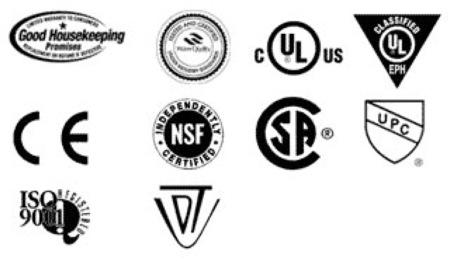I’ve been interested in the topic of "what makes a product ergonomic" for a long time. I first gave a presentation on the topic at the ErgoCon conference in the mid-late-1990’s (a yearly event in that used to take place in San Jose, CA, but is now defunct). I presented on the topic several more times at conferences and have written numerous articles touching on the subject since. I even started a company whose business model is in part dedicated to the question, Ergobuyer®.
While preparing for a 2005 presentation, I thought it would be interesting to get some random opinions from the public about what they understood "ergonomic" and "ergonomically designed" to mean. I was actually quite impressed with the responses I received, and I’ve since compiled them into this short video — check it out:
It seems I encountered some savvy consumers that day, because I’ve continued to ask people what they understand ergonomics to mean and have rarely heard such detailed responses. I’d like to conduct a broader, more scientifically valid survey like this sometime … time allowing … stay tuned.
In my presentations I show a wide variety of products that are marketed with an ergonomic slant, similar to the approach I took in a recent Ergonomics Today™ article, Are These Products Ergonomic?
For example:
- [Big John Toilet Seat:] Stylish ergonomic design has a larger, more comfortable opening and a luxuriously contoured sitting surface that is roomier than any other toilet seat on the market.
- [This consultant claimed to specialize in] Feng Shui — Spiritual Ergonomics …
- [This camera is] ergonomically sculpted …
- [These dress fabrics] fit and work ergonomically for your body …
There are countless examples that provide comic relief, many that are accurate to one degree or another, and some that even ergonomists could debate forever. Laughing, commenting and debating — that’s the easy part — but what would it really take to establish a credible approach to product certification?
To better understand that question, I’ve also researched various certifications and seals of approval for other product features and industries, such as:

And I always make the point that anyone can issue a label, seal or certification, including these fine examples:


And perhaps the best examples of the perils of approval and certification labeling are the evolutions of the "organic" and "green" seals and certifications. Which ones, if any, can you trust? What does it mean to be "green" or "organic"?

Likewise, what does it mean to be "ergonomic," and is it possible, or wise, to even attempt to pursue a certification or a seal of approval? I say yes, and let me give you an example demonstrating why: so called "wrist rests".
Practitioners who’ve been around for a while will remember when it was "common sense" to place a "wrist rest" in front of each and every keyboard in a workplace. For many companies, that was ergonomics, and their job was done once the wrist rest was issued. Ergonomists quickly realized that resting the wrist was probably not a very good idea for most users, and that we at least should be calling them palm rests so as not to give the wrong impression. Furthermore, we should even warn against their use, or at least increase awareness regarding when, where and how they might be beneficial, because when implemented without thought, they can create more harm than good. That was many years ago, and guess what … we still encounter "wrist rests" being thrown on desks as "common sense ergonomics." You’ll even find main stream ergonomic product manufacturers and retailers perpetuating this myth. I maintain that a credible certification process could have helped manufacturers, retailers, and more importantly, consumers avoid this misinformation. A credible certification process could have changed this scenario long ago, protecting the meaning and value of ergonomics, as well as all those end users, the humans in human-centered design.
So, what would it take to develop a meaningful, trustworthy, credible certification system for ergonomics in product, equipment or process design?
I and a number of others have been promoting the idea that the field of ergonomics is ready for, and desperately in need of, an industry trade association. One of the functions I envision such an association fostering is the development of standards and guidelines that form the basis for certification. Whether that organization actually oversees or issues a certification process is open for debate.
In a follow-up to this article I’ll share a model, or series of models, that I’ve either developed or worked on with others, that could form the basis for a certification system. This is an arduous process, but an important one as we advance the meaning and value of ergonomics in the marketplace.
This article originally appeared in The Ergonomics Report™ on 2011-05-04.
